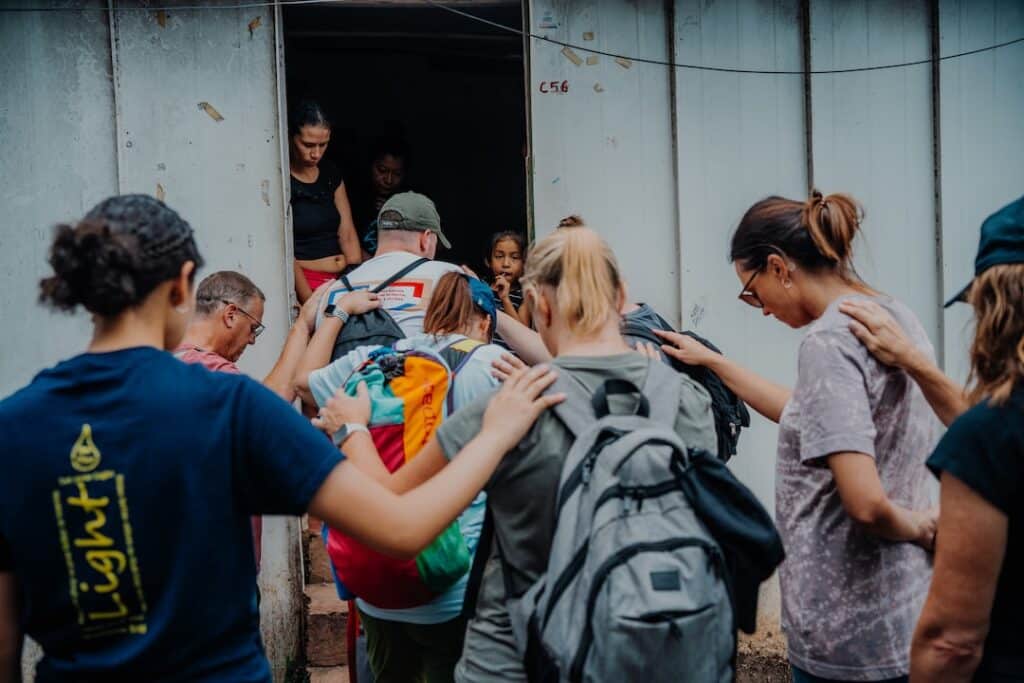The Fruits of a Generation Trained in Short-Term Missions

How much do people know about long-term, serious, contemporary missions practice?
Editors note: This article was first published on Ted Esler’s Substack. Ted is the president of Missio Nexus. We will post occasional articles from his Substack on the Missio Nexus website. If you want to receive his weekly post, you can subscribe at the Substack site.

Last month I had a conversation with somebody who felt that missions (missiology) should follow anthropology. Anthropology, it was suggested, had gone through a reformation in its theory and praxis. This was, according to my friend, because it had been manipulated and utilized by colonizers. It needed reform and, for the same reasons, my friend was arguing that missions needs the same reform.
For much of the 18th century on, missionaries did their work on the back of colonialism. Missionaries, at times, worked hand in hand with colonizers, not as bystanders or observers, but as active agents. Denial of this only serves to discredit missiology. At the same time, this is not a universal truth. Missionaries also opposed colonializing efforts, were themselves victims of it, and have been subject to falsehoods about their involvement in it. Denial of this only serves to discredit the “discreditors.” Missions is complicated. Its history is filled with mixed motives, nuance, and fake news, and it defies simplistic retellings of what has transpired.
We do need constant rethinking about any ministry work. As I wrote in The Innovation Crisis, ministries are not in competition with each other but rather compete with the fallen aspects of culture. As culture shifts and changes, so too our approach to how we work must change. The inability of ministry leaders to keep up with the rapidly changing global landscape has led us down the path of irrelevancy and ineffectiveness in communicating the Kingdom (in the West more than in the global south, but that is a topic for another day).
My friend was suggesting that we in global missions need to follow secular anthropology. Secular anthropology was being used as a tool for the ongoing “othering” of other people. You can see this on full display historically in such examples as anthropological justifications for slavery, “human zoos,” and the Nazi arguments of superiority based on pseudo-scientific theories drawn from anthropology. In its place, secular anthropology adopted an approach of empathy, dignity, and a recognition that all cultures have value. I find these changes to be very positive and in this I agree with my friend that secular anthropology has progressed.
Missiology has undergone similar changes. Let me give you a few examples of how missiology has morphed into something quite different from what it once was:
- The recognition that the preferred role of a foreign missionary is for beachhead work. In other words, foreigners (Western or otherwise) should avoid pastoring indigenous churches. Missionaries should focus most of their efforts on cultures where there are no churches and turn toward leadership development and indigenization as soon as possible. The church, once planted, is best led by indigenous people. This emphasis was popularized fifty years ago by Ralph Winter and continues to be highly influential.
- Disciple making movements (DMM), a strategy in which the foreign missionary is not at the center of the church planting process, put indigenous leadership into the driver’s seat from the beginning. “Handing over” leadership is not a transitional activity to be performed later in the process. Leaders are developed as the church develops. In the traditional model, the missionary was the pastor/leader of the church not only in the beginning but often for years afterward. DMM has turned this on its head, even influencing how the traditionalists conduct their work.
- Bible translators have probably done more to catalog and preserve indigenous languages than anybody else. Without them, we would have more extinct languages now and in the future. The race to document indigenous languages against their extinction is a race being run by missionary translators. These translators, more than ever, are from the culture in which the translation is being done.
- Contextualization has been a significant topic in global missiology for decades. It seeks to be empathetic and communicate in culturally sensitive ways. Contextualization among long-term missionaries is a given, with some arguably even going “too far” in identification with non-Christian religions. This issue has been a hot topic not because missionaries lacked cultural sensitivity, but because of too much adoption of indigenous religion.
- Concepts around poverty and physical assistance have gone through a sea change. I would point you to books like When Helping Hurts as one example among many if you want to delve into this further. These ideas have transformed the paternalistic approach that has been common among relief and development agencies. There is a long way to go in this area, but these ideas are not new or innovative any longer. They have been mainstreamed.
- Deep partnerships with indigenous Christians as well as “culturally near” Christians form the basis of most missions teams today. Many teams are multicultural by design and work in tandem with national movements.
I sense that many critics of missiology today are not aware of these changes or, if they are, they do not believe that they are widespread or have gone far enough.
Why is it assumed that missions continues to be done in the same manner as it was done twenty or more years ago? I believe that this is driven in large part by Millennials, whose exposure to global missions was largely formed by short-term local church teams.
The rise of short-term teams coincides with the coming of age of the Millennial generation. These teams were often sent to highly saturated places like Haiti and the Dominican Republic, where dependency continues to be a problem. These teams often focused on works of service that indigenous people may not have needed or wanted. They were often discipleship programs for the goers. The number of Americans sent aboard on these trips may be as high as 2 million people per year now and I believe this has fallen off since before COVID.
There are exceptions to this caricature of short-term ministry, of course. Today, there are improved approaches to short-term missions. Yet, for the Millennial generation, these short-term trips formed their first experiences with global missions. They framed missions for an entire cohort of young Evangelicals. Many of these experiences were not executed with missiologically infused strategies.
We should not wonder why, then, there is a call for rethinking and reimagining global missions. We “trained” a generation in a model that was in need of reform. It is a model that has little to do with the work of most serious, long-term, contemporary missionaries. Until a more faithful picture of what today’s missionaries are about emerges, calls for rethinking missions will continue.





Responses